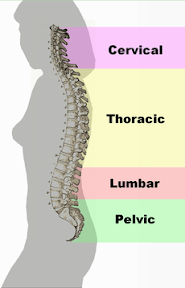 From CNN:
From CNN:There is strong evidence that people who use their blog as a career tool do better. In 2005, a Pew survey found that people who blog are generally higher earners. People who use social media end up finding jobs that are a better fit.
Changing your career and skipping entry-level positions can be easier if you have a blog.
Most importantly, a blog is a great platform for networking. Just look at this picture from the annual CME meeting Essentials of EM 2011.
A blog is a good way to meet other people who think like you do and who are in your field. It helps you to make real connections with them based on ideas and passions.
Social media use allows you to focus your connections on other top performers, since blogging about career topics probably self-selects for engaged and motivated people.
Social media in medicine: How to be a Twitter superstar and help your patients and your practice
The key concept is TIC, Two Interlocking Cycles:
- Cycle of Patient Education
- Cycle of Online Information and Physician Education
The two cycles work together as two interlocking cogwheels (TIC).

Cycle of Patient Education (click here to enlarge the image). An editable copy for your presentation is available at Google Docs.

Cycle of Online Information and Physician Education (click here to enlarge the image). An editable copy for your presentation is available at Google Docs. Feel free to use the images in your own presentations with credit to AllergyCases.org.
References:
Blog your way to a better career. CNN.
Social media in medicine: How to be a Twitter superstar and help your patients and your practice
Patients directed to online tools don't necessarily use them: 25% checked website vs. 42% read same material on paper. Am Medical News, 2012.
Comments from Twitter:
Julie Meadows-Keefe @esq140: Challenge is finding time.
Social media in medicine: How to be a Twitter superstar and help your patients and your practice
The key concept is TIC, Two Interlocking Cycles:
- Cycle of Patient Education
- Cycle of Online Information and Physician Education
The two cycles work together as two interlocking cogwheels (TIC).
Cycle of Patient Education (click here to enlarge the image). An editable copy for your presentation is available at Google Docs.
Cycle of Online Information and Physician Education (click here to enlarge the image). An editable copy for your presentation is available at Google Docs. Feel free to use the images in your own presentations with credit to AllergyCases.org.
References:
Blog your way to a better career. CNN.
Social media in medicine: How to be a Twitter superstar and help your patients and your practice
Patients directed to online tools don't necessarily use them: 25% checked website vs. 42% read same material on paper. Am Medical News, 2012.
Comments from Twitter:
Julie Meadows-Keefe @esq140: Challenge is finding time.





